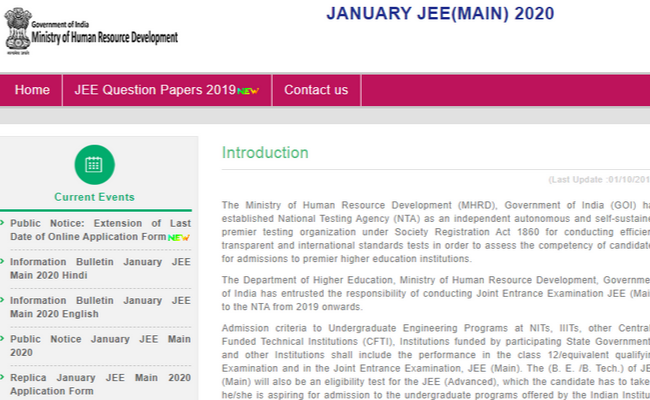
The JEE (Joint Entrance Exam) Main exam for the year 2020 will be conducted between January 6th and 11th 2020. It is one of the most crucial exams for getting into higher educational institutes that offer courses in engineering.
From 2019 onwards, the National Testing Agency (NTA) has been given the responsibility to conduct the JEE Main exam, and the application process has been in full swing for the past one month or so.
It is important for all applicants to be well acquainted with the complete syllabus, in detail and make sure that they more than touch upon every topic or concept mentioned to be able to secure good scores and meet the cut offs.
The JEE Main syllabus is mainly based on three subjects- Physics, Chemistry and Maths. However, the exam is divided into 2 papers- Paper I and Paper II.
Paper I has questions from all three subjects mentioned above and Paper II is completely an aptitude test. For Paper I, Mathematics, various questions are asked from as many as 16 different units (which contain further sub-units).
JEE Main Sample Questions on New Section Released
The units include- Sets, Matrices and Determinants, Complex Numbers and Quadratic Equations, Permutations and Combinations, Binomial Theorem and its application, Integral Calculus, Co-ordinate Geometry, Vector Algebra, Trigonometry, Statistics and Probability, Mathematical Reasoning and a few others.
The Physics syllabus is divided into two sections- A and B. Section A is the theory part which has the major weightage while Section B is the practical part which has lesser weightage.
Stay connected with fellow students on PaGaLGuY for JEE Main Syllabus
The topics in Section A include- Measurement, Kinematics, Laws of Motion, Gravitation, Work, Energy and Power, Thermodynamics, Electrostatics, Optics, Magnetism and Electromagnetism, etc.
The practical part is basically a test of experimental skills and includes experiments on Vernier Callipers, Screw Gauge, Simple Pendulum, Modulus of Elasticity, Potentiometer, Galvanometer and many others.
The part on Chemistry has three sub sections- Physical Chemistry (states of matter, atomic structure and bonding, chemical kinetics, electrochemistry, etc.), Inorganic Chemistry (periodicity, s-block elements, p-block elements, etc.), Organic Chemistry ( organic compounds and their basic principles, nomenclatures, organic compounds containing halogens, polymers, biomolecules, chemistry in everyday life, etc.).
In the physical chemistry section, there is a whole unit on environmental chemistry which deals with different kinds of chemicals in relation to the environment and the different types of pollutions caused.
The second paper, which is mainly an aptitude test (B.Arch/ B. Planning). The first part of this paper tests the candidates’ knowledge of things related to architecture, like building materials, places, etc., and tests the analytical reasoning ability of students.
The second part, on the other hand, deals with the candidates’ understanding of three-dimensional perception- creating and drawing geometrical shapes and forms, texture, etc.). For this paper, students are advised to carry geometry box, pencils, crayons, colour pencils, etc.
